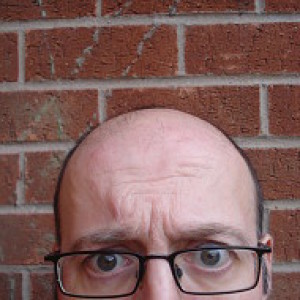One Way
About 13 years ago I bought a second hand SLR and enroled on a photography course at New College Nottingham. I lasted about three weeks, didn't like the tutor, got frustrated with the workings (or non-workings) of the camera and took a horrible set of flat, nasty black and white pictures that I wasn't very pleased with. One of them, I recall, was of this wall in Sherwood. It's been replastered, somewhat wonkily, and they've put a shiny new sign up, but otherwise it's the same - and I still think there's something obscurely cool-looking about it. So it's interesting what stays with you - though I think my current interest in taking pictures will probably stick at my handy little silver Sony for a while (he blithely says in the full knowledge that he's been sneakily ogling DSLR's on Amazon since about blip 50...!)
I've been reading the most fabulous book: 'Great Works: 50 Paintings Explored' by the late Tom Lubbock, who was apparently the art critic for The Independent prior to his unfortunate death last year. It's a collection of short - 2 or 3 page - essays about individual paintings that really makes you take a fresh look at them (luckily there's a very fine reproduction with each piece.) It's beautifully written and in each case he picks up on a really interesting idea or connection to illuminate the experience of the looking. There's a fascinating example where he uses the story of a trick that Hitchcock used in 'Suspicion' - putting a light bulb inside a glass of possibly poisoned milk that Cary Grant is carrying to draw attention to it without you realising what is happening - to illustrate the way that the painter of a seventeenth century still life plays with light to achieve a particular effect. Despite the painting looking at first glance almost hyperreal the artist actually just missed out some shadows that would have been there in actuality. As Lubbock says, "if a painting wants to give a particular emphasis to something, no problem, it has numerous means at its disposal. It can do what it likes with lighting and luminosity. It doesn't have to come up with brilliant solutions because, unlike the photographic arts, it doesn't have to deal with the resistance of the real world." A really good read which I'm going to spend at least the next week recommending to everyone I meet!
It's been a good day overall, culturally, as I've also been immersed in the 'extended vinyl edition' (though via the magic of ipod technology - there's still plenty of lovely 'bottom end', and even the odd crackle?) of Japan's classic 'Quiet Life.' I acquired it courtesy of the generous sharing of a fellow over at a blog called Castles in Space and it's marvellous. I'm not always a fan of these super-new-mega-special-edition extended doohickies (so often the so-called 'bonus' tracks just detract from the actual album that you wanted to hear in the first place) but this one is just great. There's a whole 'side' of remixes of 'Life In Tokyo' that flow together like one great mega-mix: lots of Sylvian-warbling, swathes of synth, all the eighties drops and percussion breaks that only Japan can actually get away with - and, oh, those basslines! It's like a hot bath for your ears. I expect a few days of this on heavy rotation with the very good new Sylvian compilation before I just go ahead and break out 'Tin Drum' and 'Brilliant Trees' as well...!
Sorry, I'm always like this - largely monosyllabic but then once I get going you can't shut me up!
- 0
- 0
- Sony DSC-W55
- 1/100
- f/2.8
- 6mm
- 100

Comments
Sign in or get an account to comment.


